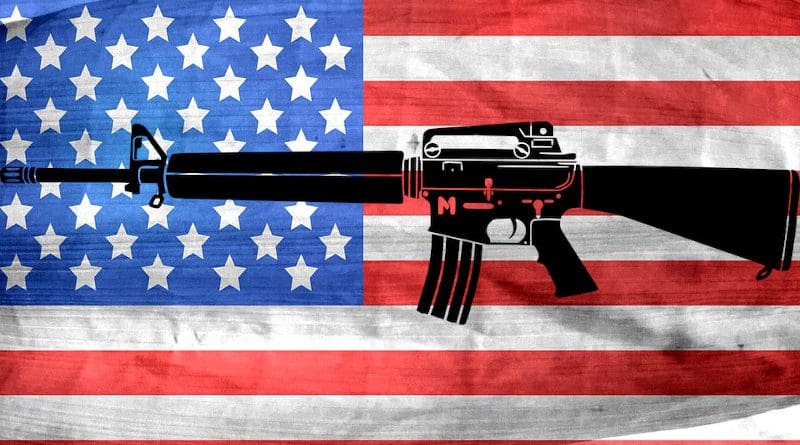The Sandy Hook Suicide Attack – OpEd
By Paul Woodward - War in Context
In one particular but quite significant way, Adam Lanza’s death was a typical American suicide: he shot himself
Although only 5 percent of Americans who attempt suicide shoot themselves, 50 percent of suicides are caused by firearms. Guns are simply much more efficient than most other methods through which people try to end their own lives. And although many people imagine the greatest danger guns pose is by being used to murder others, more people die by firing a gun at themselves. Indeed, while gun owners typically say they need their weapons for self protection, 83 percent of gun-related deaths in American homes are the result of suicide.
Since 2001, suicide attack is a phrase that has shaped American perceptions of the Middle East and framed much of U.S. national security policy-making. This is unfortunate for several reasons, not least because there is little evidence that the perpetrators of so-called suicide attacks conduct their operations in order to commit suicide — there are after all much easier ways for someone to kill themselves. Moreover, from what is known about many of the attackers, it is clear that they see the violent ending of their own lives as a means to a greater purpose rather than an end in itself.
As Robert Pape writes:
In general, suicide attackers are rarely socially isolated, clinically insane, or economically destitute individuals, but are most often educated, socially integrated, and highly capable people who could be expected to have a good future. The profile of a suicide terrorist resembles that of a politically conscious individual who might join a grassroots movement more than it does the stereotypical murderer, religious cult member, or everyday suicide.
In contrast, real acts of suicide are focused resolutely on the termination of life — not what might follow.
When each new school massacre in America is reported, it almost always turns out that the killing finishes when the shooter ends his own life. While it might seem that suicide is in some sense a logical conclusion to the blood-letting — the gunman might reasonably conclude that if he doesn’t shoot himself he will end up getting shot by the police — because the massacre becomes the immediate focus of media attention, the suicide itself is turned into a footnote. A natural reluctance to comment much on the method of the gunman’s death lest such attention suggests he might be worthy of sympathy, also has the effect of making the suicide seem peripheral to the event.
This is a mistake, for it we want to understand what happened in Sandy Hook on Friday morning we should be in no doubt that this was the way Adam Lanza chose to make certain that his own death would not go unnoticed.
Individuals who, for whatever reason, experience extreme social isolation — loners who by their nature tend to go unnoticed — are often perceived as lacking the desire to be socially engaged, but more often their isolation serves to cloak a cauldron of agony and despair born from frustrated social needs.
The way Lanza ended his life suggests that he felt separated from the rest of the world by an unbridgeable chasm. Having concluded that he would never be able to cross that divide, he found company by taking away 27 innocents lives who, to his mind, would be forced join him in oblivion.
While in a typical suicide there is a dread of life and some kind of reconciliation with the fact that we are all destined to die alone, those who kill others before taking their own lives seem trapped in a tormented fight against their own isolation.
Shooting massacres, even when they occur as frequently as several times a year, are still viewed by most Americans as isolated events — anomalies in an otherwise relatively peaceful society. But — to borrow a metaphor from the war on terrorism — the swamp in which this carnage takes place is a pervasive feature of American life: the fragmentation of individual lives separated from social networks and the life-affirming experience of physical contact with others.
Facing the epidemic of isolation in America would require a collective willingness to embark on some profound cultural changes. In many ways, this is a society that strangles its own development by making human relationships subordinate to individual freedom.
Before such changes can begin to take place there will be more tormented souls who try to follow in Lanza’s footsteps. But whether the results are equally catastrophic depends more immediately on one thing: how easily they have access to guns.

